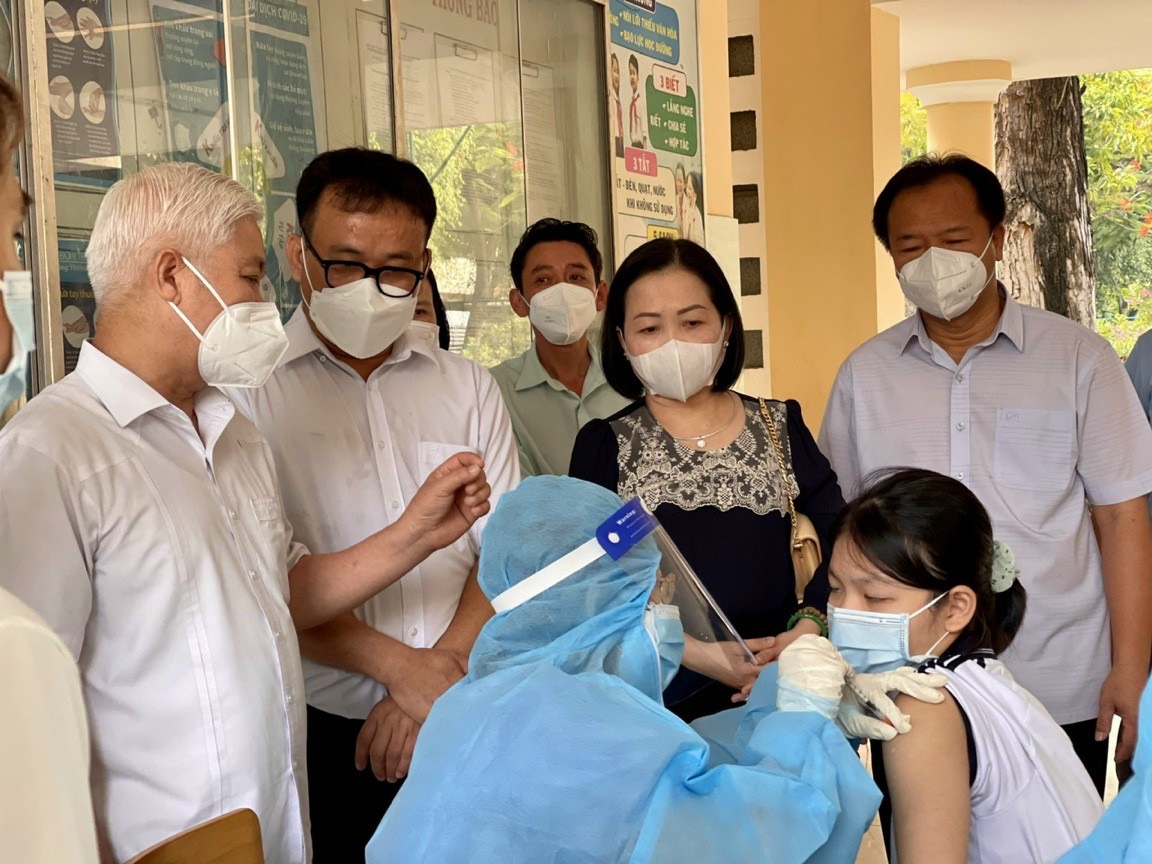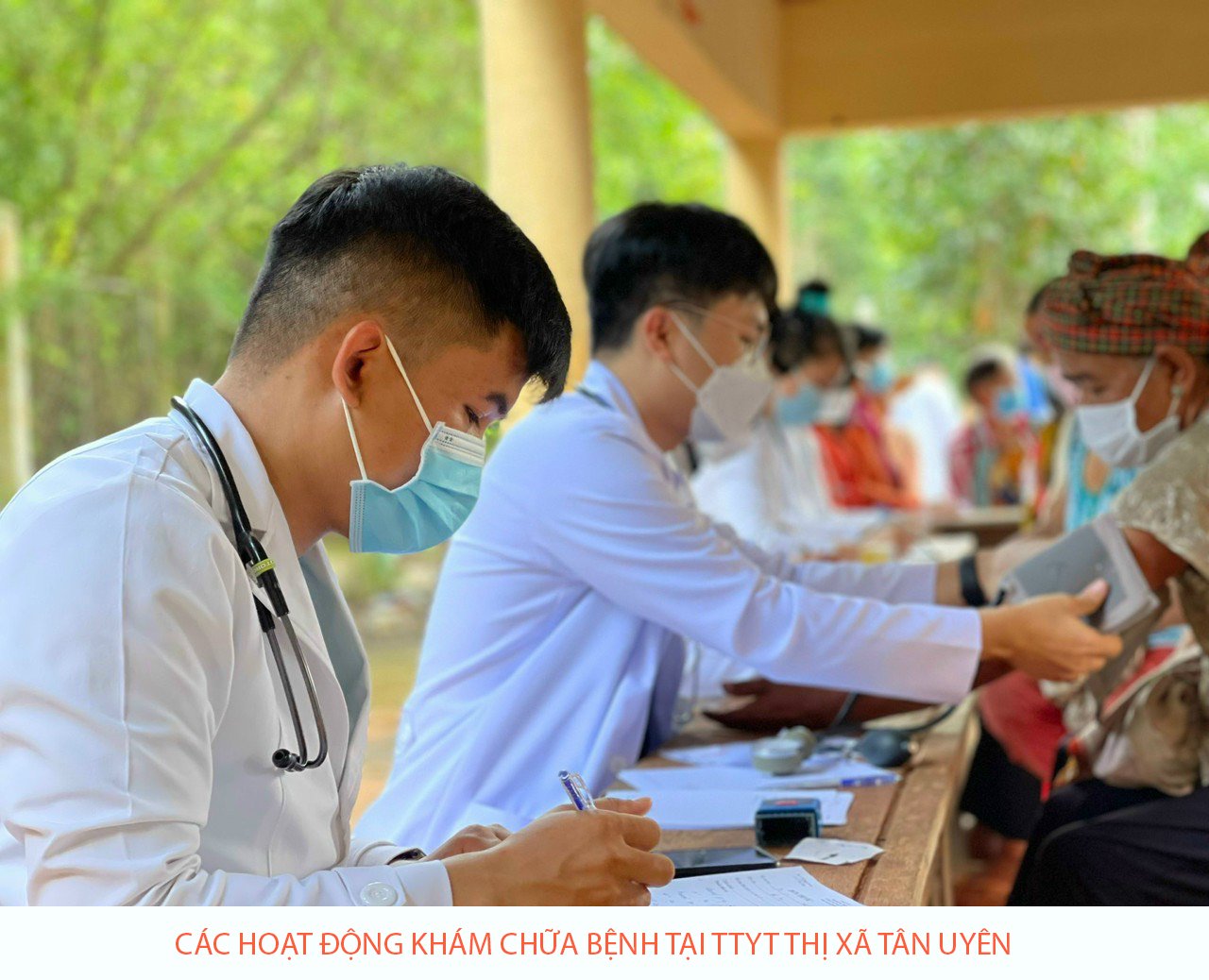The COVID-19 pandemic, which occurred in the years 2020-2021, had severe consequences for Binh Duong province's economic and social development, as well as the health sector. It has put forth many new requirements to be set for the health sector, especially the development of a qualified medical workforce capable of better meeting the people's health care needs, contributing to the successful implementation of the province's socio-economic development goals in the coming time.
780 doctors and medical staff are required annually
In recent years, Binh Duong province has had many special policies to attract and train human resources, such as: Decision No. 74/2011/QD-UBND, dated December 21, 2011 of the Provincial People's Committee on the recruitment of human resources; regulations on attraction policies, support regimes for training and human resource development in Binh Duong province; and Resolution 05/2019/NQ-HDND, dated July 31, 2019 of the Provincial People's Council on policy regulations attracting and supporting training and developing human resources in Binh Duong province. These policies were effective, but some of their contents are now out of date, especially since the COVID-19 pandemic and new demands from practical requirements.
Although there have been specific plans and strategies with many investment resources for the development of the health sector, they have not kept up with the actual needs. The increasing problem of environmental pollution, complicated disease situations, and changing disease patterns are the challenges that the health sector has to face in the coming time. Especially in recent times, the COVID-19 epidemic has increased the overload of the entire health system, but this is also an opportunity for the health sector in Binh Duong province to have conditions to renew the entire system, especially the personnel structure and employment positions.
Binh Duong has implemented a project to build a provincial general hospital with a capacity of 1500 beds and modern equipment, which is expected to be put into operation in 2023. This is a modern, regional hospital. In addition, the province has been building many specialized hospitals, upgrading medical centers, and building more hospitals to treat COVID-19 and other infectious diseases, and consolidating the grassroots health system and non-public healthcare. This is a great opportunity to raise the health care level in Binh Duong province to a new level.
However, with the current situation, Binh Duong's health sector currently has 3 provincial hospitals, 9 district health centers, 19 regional general clinics, and 91 commune health stations. There are 15 private hospitals, 20 corporate health stations, 62 private polyclinics, 658 specialty clinics, and 3,008 medical establishments. There are currently 8,880 healthcare workers in the industry, with 7.51 doctors per 10,000 people, 1.69 pharmacists per 10,000 people, and 33.2 healthcare workers per 10,000 people. Currently, the planned number of hospital beds reaches 5,172 beds (the planned number of beds per ten thousand people is 20.3 beds), these rates and targets are still low compared to the targets set by the Ministry of Health in 2020 of 9 doctors and 25 hospital beds/ten thousand people.
The public health sector accounts for 42% of the total health workforce, of which there are 826 public medical doctors out of a total of 2,211 doctors. However, the number of hospital beds assigned to public healthcare accounts for nearly 55% of the whole industry. With the population in December 2021 reaching 2,603,971 million, human development indicators such as doctors per ten thousand people reached 7.51 (of which non-public healthcare was 3.7), hospital beds per ten thousand people 23 beds are fewer than the target set by the Ministry of Health for 2020 of 10 doctors and 25 beds per ten thousand people. Due to the mechanical population growth of more than 100 thousand people per year in the province, more than 650 health workers and 135 doctors are needed each year to meet the medical examination and treatment needs.
Urgently ensuring healthcare human resources
Over the years, with the close direction of the Provincial Party Committee, the People's Council, the Provincial People's Committee, and the efforts of Binh Duong's medical staff, important achievements have been achieved. The health sector has applied many high technologies and diverse medical services to medical examination and treatment, improved the quality of medical examination and treatment services for the people, and regularly supported and transferred techniques to lower levels. In order to achieve and sustainably maintain the above professional achievements, the health sector has always paid attention to the human resources factor and taken the development of health human resources seriously as one of the decisive factors for the success of sustainable development.
In 2023, the Binh Duong health sector will receive and put into use a 1500-bed provincial general hospital with many modern pieces of equipment. In the following years, it will continue to deploy many treatment facilities and establish many new hospitals such as those for obstetrics, geriatrics, and oncology, which requires the development of a team of highly qualified and specialized medical staff.
In order to ensure human resources to serve the industry, Binh Duong has also implemented many policies to attract and train qualified intellectuals, significantly contributing to the socio-economic development process of the province. However, after a period of implementation, some orientations, tasks, and solutions in the above policies are not suitable for the new situation; human resource development in recent years still has shortcomings and is not able to satisfy the operational requirements of the health sector and the socio-economic development of the province. Highly skilled doctors continue to leave to work in non-public healthcare because the pay is more attractive. The number of young doctors who have just graduated has been attracted and recruited, but it is still low compared to the demand and has not yet been trained to meet the needs of intensive medical examination and treatment. Overcrowding of hospitals at the provincial level is increasing, causing frustration for patients, medical staff, and society as a whole.

Leaders of Binh Duong Province and leaders of the health sector examine Covid 19 vacination work at schools
In addition, during the COVID-19 pandemic, Binh Duong had over 400,000 cases with over 4,000 deaths. At its peak, more than 70,000 patients were treated. The prevention and control of the COVID-19 epidemic show that the province's health system is lacking in quantity, weak in quality, and passive when dealing with medical emergencies.
Meanwhile, Binh Duong is a province with a high migration rate (200.4‰) and mechanically has a rapidly increasing population, from 1,512,500 people (2009) to 2,673,901 people (2021) and 2,741,989 people (estimated in 2022), which puts great pressure on the health sector and requires a commensurately developed health system and human resources.
Notably, preferential policies to attract medical human resources in the past have proved their effectiveness in attracting and training many high-quality human resources for the province. However, the policies still reveal many limitations and shortcomings, and the health workforce is still not commensurate with the socio-economic development of the province.
Recruitment and attraction solutions
In the recent practice of recruiting and attracting high-quality human resources to Binh Duong, an average of 55 doctors and postgraduate doctors are recruited each year. The period 2021–2026 sets out an average annual plan that will recruit about 80 more doctors and postgraduate doctors and attract 100 medical staff annually. Thus, by 2026, about 400 more doctors and postgraduate doctors will be recruited and attracted.
The human resources department of the units should be trained in building their own job placement system, thereby developing annual and 5-year recruitment plans. It is necessary to specify the number, occupations, standards, and expected time of recruitment and training so that the Department of Health has a basis to implement the attraction policy.
On the basis of the job position system and recruitment demand, the units cooperate with the Department of Health and the Department of Home Affairs to announce recruitment publicly. Those who meet the recruitment standards still need to be tested, interviewed, and tried on a job to assess their professional capacity, working skills, and moral character; thereby, they will be assigned the appropriate job arrangement, and the recruitment of candidates who have degrees but do not have the capacity will be restricted.
The Provincial People's Committee will be advised to have mechanisms of recruitment according to the needs of the autonomous unit, including signing expert contracts, following the team, providing medical examination and treatment, and consulting using telehealth technology; supplementing policies on recruitment, attracting human resources, high-quality human resources in cash, public service houses, etc. Besides retaining solutions, a compensation mechanism after training and salary reimbursement for private units should be established, and cases that do not violate professional standards and regulations on professional ethics should be deprived of their practice certificates.

Binh Duong needs to recruit about 80 doctors and postgraduate doctors, attracting 100 medical staff per year in the period 2021-2026
In the short term, it is necessary to continue the policy of supporting scholarships and training costs for medical school students from Binh Duong province with the obligation to return to work in the province. The policy of training doctors and nurses according to the address used should be continuously implemented. It is also necessary to associate with universities: Hanoi Medical University, the University of Medicine and Pharmacy in Ho Chi Minh City, Pham Ngoc Thach Medical University, Can Tho University, and some other universities. With the provincial budget and a reasonable remuneration regime while studying and returning to work after completing the study, medical professionals, doctors, should be encouraged to study and improve their qualifications to specialists level I, specialists level II, masters, and doctorates. Specialties that are lacking should be focused on, such as diagnostic imaging, hematology, blood transfusion, cardiology, oncology, etc.
The training of college-level medical staff at Binh Duong Medical College should be promoted, their qualifications should be standardized, and by 2025, there will be no staff with intermediate qualifications in the health sector; connecting and linking with domestic and foreign universities to train medical staff at undergraduate and postgraduate levels.
In the medium and long term, human resources should be trained by building a new university of medicine and pharmacy in Binh Duong province. The advantages of a university of medicine and pharmacy for the development of high-quality medical human resources in the province include: proactively training high-quality graduate doctors, pharmacists, and medical staff to meet the demands of the province, the Southeast region, and the whole country; attracting many good and experienced doctors to work and settle down in the province for a long time; paying special attention to the quality of training, not the quantity. It is necessary to train doctors who are familiar with medical knowledge, have practical ability, and give priority to children in the province.
Regarding mechanisms and policies, it is advisable to perfect mechanisms and policies to support the development of high-quality healthcare human resources. The main reason for not attracting high-quality health workers and trained medical staff to compensate for training costs and go to the private sector to work is their income. Therefore, it is necessary to have separate incentives for those who are attracted, and units need to promote autonomy and self-responsibility and create favorable legal conditions for socialization to work to improve income. Special treatment policies should be studied for outstanding talents, experts, and leading scientists. There should be a breakthrough mechanism for arranging and using young human resources with basic training, creating conditions for young officials to be promoted and appointed to leadership and management positions. Priority will be given to qualified candidates to participate in training projects to improve professional qualifications and other training courses.
Dr. Specialist Level II. Huynh Minh Chin –
Deputy Director of Binh Duong Department of Health